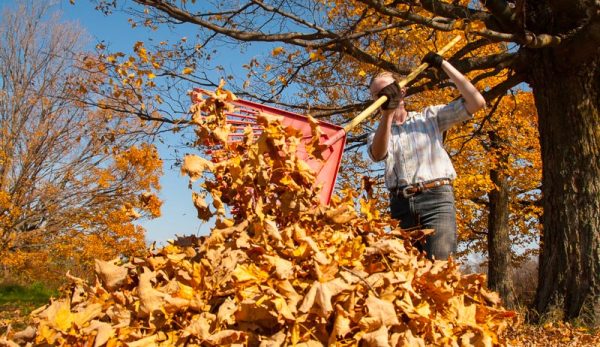
I was reading recently about the benefits maple leaves offer to soil. They contain important nutrients (including calcium) but relatively little lignin. This means they break down faster than lignin-heavy leaves like those from oak trees. There are many, many sugar maples on my farm. So I’m planning to gather their fallen leaves this fall and shred them for quicker decomposing. I’ll then use them for mulch and compost in my orchard.
I’ll even throw in some ash leaves (which are also good for this purpose) but aim to avoid walnut leaves (which can be toxic to other plants). That won’t be hard. There are only three walnut trees on my farm.
The question is, what’s the best way to gather leaves for shredding, mulching and composting? Since I have no intention of picking them up one by one (farmers are busy folks!), I’ll need tools (like these) to speed me up.
Intrigued by the notion of using your farm’s leaves as a source of mulch and nutrients for garden beds and orchards? Here are three ways to effectively gather large quantities of leaves.
Read more: Read about how to plant an orchard of fruit and nuts trees.
Rake Them by Hand
The simplest (and perhaps tidiest) way for me to gather fallen maple leaves is to rake them by hand into large piles. From there, I can haul them to a leaf shredder (or bring the leaf shredder to the piles) and reap an abundance of quality leaf mulch and composting material.
Raking by hand is a good way to extract every stubborn leaf from among grass blades. This is valuable if you want a perfectly manicured and tidy lawn.
Raking, however, takes time and effort. So if you don’t mind a few leaves getting left behind, you might want to explore mechanical means.
Use a Leaf Sweeper to Gather Leaves Mechanically
A leaf sweeper is a wheeled device used to scoop and gather fallen leaves. Small models are pushed by hand (similar to a hand-pushed reel mower). Larger models can be towed behind a lawn tractor or ATV.
In my experience, leaf sweepers are effective at removing the freshest leaves from a lawn. However, they can struggle to pick up leaves that have worked their way down into the grass. This can be challenging if you’re looking for a perfectly manicured lawn.
If your goal is to quickly gather up a bunch of leaves to use for mulch and compost, though, a leaf sweeper can do the job just fine.
Read more: Save some money and use your trees as fence posts!
Gather Them from the Perimeter of a Deer Fence
No, I’m not joking. The black plastic deer fence that surrounds three sides of my orchard runs among mature maple trees and young saplings, with a sizable number of large trees inside the fence. Every autumn when the leaves fall, the wind blows large volumes of leaves up against the perimeter fence. This blocks them, preventing them from blowing any further.
By the time all the leaves have dropped, the accumulation along the fence is surprisingly deep. It’s a ready and convenient source right inside my orchard. If my deer fence can double as a passive leaf-gathering device, I might as well take advantage!
It’s hard to imagine anything faster and easier than wind and a fence working together to gather leaves while I tackle other projects.
I’m looking forward to gathering maple leaves this fall to make mulch and compost. But I’m definitely not in any hurry to get started. Summer flies by in the north woods, and I’m not ready for it to end yet!




